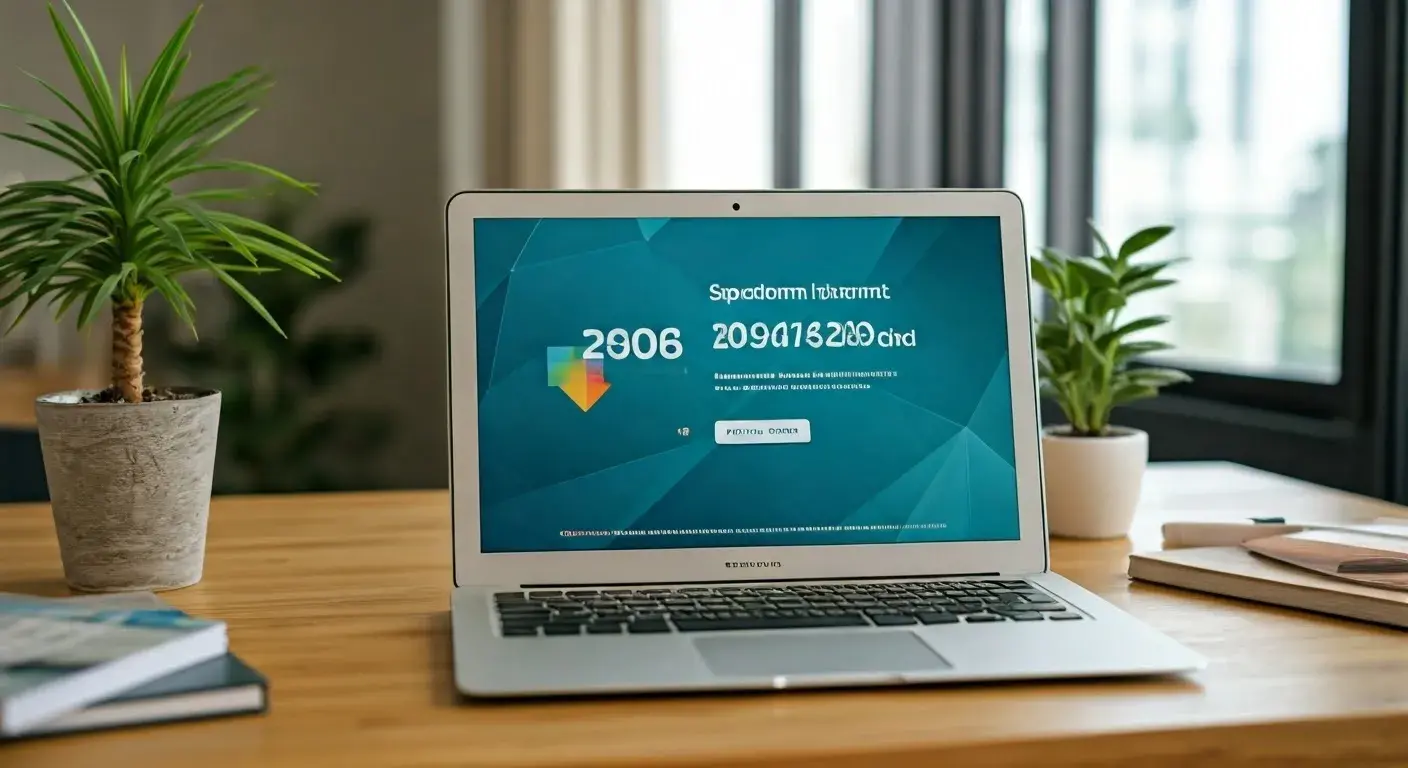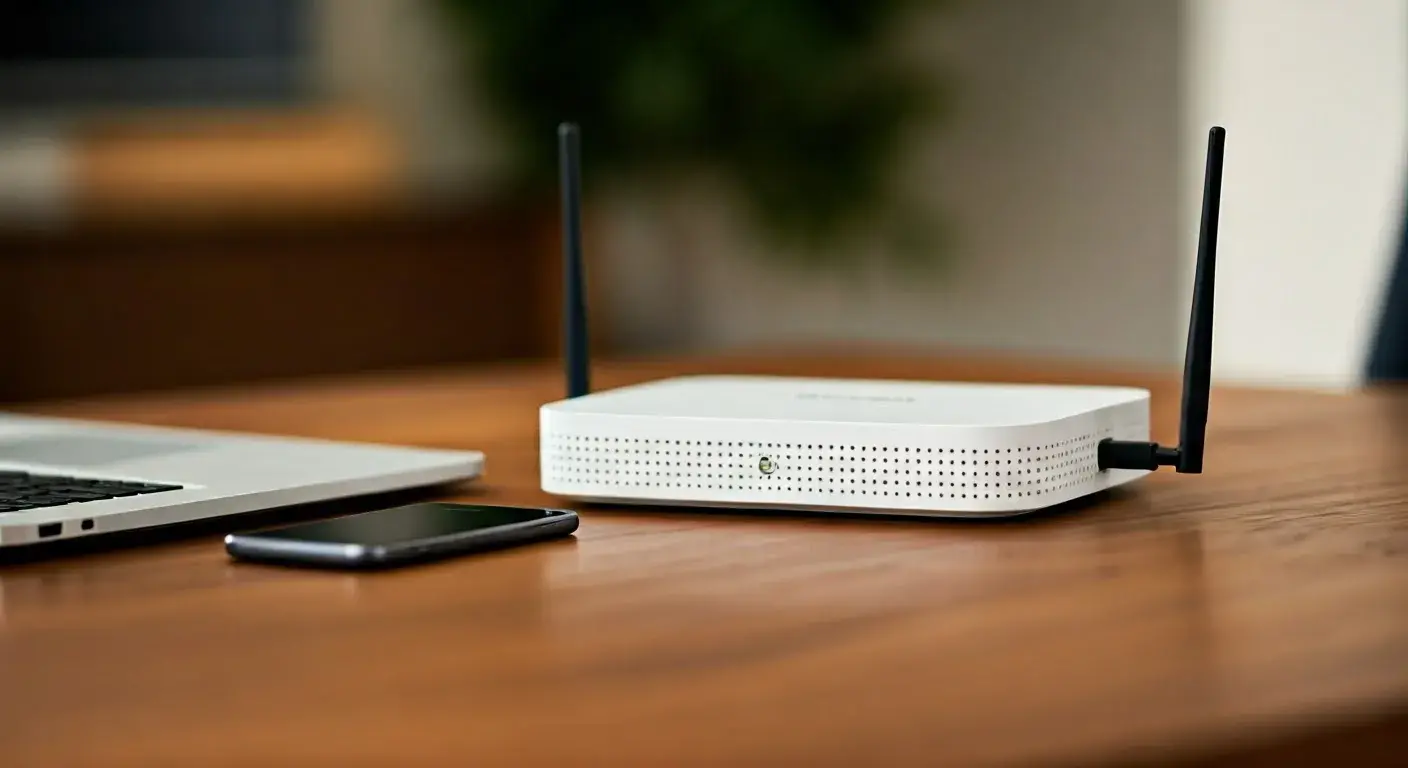What Type of Internet is Spectrum ?

Spectrum internet primarily offers high-speed cable internet, leveraging coaxial cable networks to deliver reliable and fast connections suitable for streaming, gaming, and everyday browsing. It's a dominant force in many regions, providing a robust alternative to DSL and satellite.
Spectrum Internet Overview: What You Need to Know
When you're looking for a new internet service provider, the sheer number of options can be overwhelming. Spectrum, a major player in the telecommunications industry, offers a widely available and generally well-regarded internet service. But what type of internet is Spectrum, and how does it stack up against the competition? This comprehensive guide will break down Spectrum's technology, plans, pricing, and performance, helping you determine if it's the right fit for your home in 2025. We'll delve into the specifics of their cable internet offerings, compare them to other connection types, and provide actionable insights to guide your decision.
Understanding Spectrum Internet Technology
The core of Spectrum's internet service lies in its robust cable infrastructure. Understanding this technology is crucial to appreciating its capabilities and limitations. Spectrum, like many large internet providers in the United States, primarily utilizes the same coaxial cable network that delivers cable television signals to homes.
Cable Internet Explained
Cable internet works by transmitting data through the coaxial cables that are already present in many households for cable TV. These cables, originally designed for analog television signals, have been upgraded to carry digital data. The technology uses a system called DOCSIS (Data Over Cable Service Interface Specification) to manage the flow of data over these cables. DOCSIS standards have evolved over the years (e.g., DOCSIS 3.0, DOCSIS 3.1, and upcoming DOCSIS 4.0), with each iteration offering increased speeds and improved efficiency. Cable internet is a shared medium, meaning that bandwidth is distributed among users in a particular neighborhood or segment of the network. While this allows for high speeds, extreme congestion during peak hours can sometimes lead to slower performance for individual users.
How Spectrum Uses Cable
Spectrum has invested heavily in its hybrid fiber-coaxial (HFC) network. This means that while the main lines running to neighborhoods are often fiber optic cables (which are faster and more reliable), the final connection to individual homes typically uses coaxial cable. This HFC approach allows Spectrum to leverage existing cable infrastructure while still offering competitive speeds. The company continuously upgrades its network to support newer DOCSIS standards, enabling higher download and upload speeds for its customers. By utilizing this widespread cable network, Spectrum can reach a large number of households, making it a convenient option for many consumers.
Advantages of Spectrum Cable Internet
The primary advantage of Spectrum's cable internet is its speed. In many areas, Spectrum offers some of the fastest download speeds available, often reaching hundreds of megabits per second, and in some cases, over a gigabit per second. This makes it ideal for activities like 4K streaming, online gaming, and downloading large files quickly. Another significant benefit is its widespread availability. Because cable infrastructure is already in place in many urban and suburban areas, Spectrum can serve a vast customer base. Furthermore, cable internet is generally more reliable and less susceptible to weather disruptions than satellite internet. The shared nature of the network, while a potential drawback, also means that when the network isn't heavily utilized, speeds can be exceptionally fast.
Potential Drawbacks of Cable Internet
Despite its advantages, cable internet isn't without its downsides. As mentioned, it's a shared network. During peak usage times (evenings and weekends), when many people in your neighborhood are online, your internet speed might decrease. This is because the available bandwidth is being divided among more users. Another common concern is upload speed. While download speeds on cable are typically very good, upload speeds are often significantly lower. This can impact activities like uploading large video files, participating in high-quality video conferences, or streaming live content from your home. While Spectrum has been improving upload speeds with newer DOCSIS standards, they generally don't match download speeds. Finally, in areas where Spectrum is the only cable provider, there might be less incentive for them to offer highly competitive pricing or exceptional customer service, leading to potential frustrations for some users.
Spectrum Internet Plans and Speeds (2025)
Spectrum offers a range of internet plans designed to cater to different user needs and budgets. Understanding these plans, their associated speeds, and how they translate to real-world usage is key to choosing the right service. As of 2025, Spectrum's offerings continue to focus on delivering high-speed cable internet.
Spectrum Internet Tiers
Spectrum typically offers a few core internet speed tiers. While exact names and speeds can vary slightly by region and promotional offers, common tiers include:
- Spectrum Internet Gig: This is their top-tier offering, often providing download speeds of up to 1 Gbps (1000 Mbps). This is ideal for the most demanding users, large households with many connected devices, and those who require the absolute fastest speeds for professional use or extensive media consumption.
- Spectrum Internet Ultra: This plan usually offers download speeds in the range of 300-500 Mbps. It's a strong contender for most households, capable of handling multiple simultaneous streams, online gaming, and general web browsing without issue.
- Spectrum Internet: This is often their most basic plan, typically providing download speeds of around 100-300 Mbps. While lower than the other tiers, this speed is still sufficient for many households with moderate internet usage, such as casual browsing, email, and streaming standard-definition content.
It's important to note that these are advertised download speeds. Actual speeds can vary, and upload speeds are almost always lower than download speeds. For example, a 1 Gbps download plan might have an upload speed of 20-50 Mbps.
Understanding Download and Upload Speeds
Download speed refers to how quickly you can receive data from the internet to your device. This is what most people think of when they hear "internet speed" and is crucial for streaming videos, browsing websites, downloading files, and playing online games. Higher download speeds mean faster loading times and smoother experiences.
Upload speed refers to how quickly you can send data from your device to the internet. This is important for activities like sending large email attachments, uploading photos or videos to social media or cloud storage, participating in video calls, and live streaming. For most home users, download speeds are more critical, but for content creators or those who frequently use video conferencing, upload speed becomes increasingly important.
Factors Affecting Actual Speeds
Several factors can influence the actual internet speeds you experience, even with a high-speed plan:
- Network Congestion: As a shared cable network, speeds can fluctuate during peak hours when many users in your area are online.
- Your Equipment: The age and quality of your modem and router play a significant role. An older router or a modem that doesn't support the latest DOCSIS standards can bottleneck your speeds.
- Wi-Fi vs. Wired Connection: Wi-Fi signals can be affected by distance from the router, physical obstructions (walls, furniture), and interference from other electronic devices. A wired Ethernet connection directly to your router will almost always provide more consistent and faster speeds.
- Device Limitations: The capabilities of the device you're using (laptop, smartphone, tablet) can also limit the speeds it can achieve.
- Number of Connected Devices: The more devices you have connected to your network simultaneously, the more the available bandwidth is shared, potentially slowing down individual devices.
Spectrum Speed Recommendations by Usage
To help you choose the right plan, here are some general recommendations based on typical household usage as of 2025:
- 1-2 Users, Light Usage (Email, Browsing, SD Streaming): 100-200 Mbps download speed is usually sufficient. Spectrum's basic plan often fits this category.
- 2-4 Users, Moderate Usage (HD Streaming, Online Gaming, Video Calls): 200-500 Mbps download speed is recommended. Spectrum's Ultra plan or a mid-tier offering would be suitable.
- 4+ Users, Heavy Usage (Multiple 4K Streams, Extensive Online Gaming, Large File Downloads/Uploads, Work-from-Home): 500 Mbps to 1 Gbps download speed is ideal. Spectrum's Internet Gig plan is designed for these scenarios.
It's always a good idea to check your current internet usage and consider how many devices will be connected simultaneously before making a decision. You can also look at Spectrum's official website for the most up-to-date plan details in your specific area.
Spectrum Internet Availability
One of the most critical factors when choosing an internet provider is whether their service is available in your location. Spectrum has a significant footprint, but it's not universally available across the entire United States. Understanding their coverage area is essential.
Where is Spectrum Available?
Spectrum's service areas are concentrated in specific regions of the United States, primarily in the Northeast, Southeast, and parts of the Midwest. They operate under the Charter Communications umbrella, which acquired Time Warner Cable and Bright House Networks. This means that if you were a customer of those older providers, you are likely now a Spectrum customer. Their service is generally found in:
- Major metropolitan areas and their surrounding suburbs.
- Specific states where they hold significant market share, such as New York, California, Texas, Florida, North Carolina, Ohio, and Pennsylvania.
Spectrum does not offer service in all 50 states, and even within states where they are present, their network doesn't cover every single town or rural area. Their focus is on densely populated regions where their cable infrastructure can be most efficiently deployed and maintained.
Checking Your Address
The most reliable way to determine if Spectrum internet is available at your specific address is to visit their official website or call their sales department. Spectrum provides an online tool where you can enter your street address, city, state, and zip code. This tool will instantly tell you if Spectrum services are offered at your location and what plans and speeds are available. It's a straightforward process that takes only a minute or two.
Steps to check availability:
- Go to the Spectrum website.
- Look for a "Check Availability" or "See Plans" section.
- Enter your full address.
- Review the results to see available internet, TV, and phone plans.
If Spectrum is not available, you will need to explore alternative providers in your area, which might include DSL, fiber optic (if available), satellite, or fixed wireless options.
Spectrum vs. Competitors: Availability
Spectrum's availability is generally better than smaller, regional providers but not as widespread as national DSL providers like AT&T or CenturyLink, which can often reach more rural areas. However, Spectrum's cable network offers significantly higher speeds than most DSL services. Fiber optic providers, such as Verizon Fios or Google Fiber, offer the fastest speeds but have the most limited availability, typically only in select cities and neighborhoods. Satellite internet (e.g., Viasat, HughesNet) and newer 5G home internet services (from T-Mobile or Verizon) have much broader availability, including rural areas, but often come with compromises in speed, latency, or data caps compared to cable.
In summary, Spectrum excels in areas where their cable infrastructure is already established, offering a strong balance of speed, reliability, and availability for a large segment of the US population. However, if you live in a rural area or a city with a robust fiber-optic network, other options might be more suitable.
Spectrum Internet Pricing and Value (2025)
When considering any internet service, the cost is a major factor. Spectrum's pricing can be competitive, especially when you understand their promotional offers, bundle options, and potential additional fees. As of 2025, Spectrum continues to offer a mix of introductory and standard pricing structures.
Spectrum Plan Costs
Spectrum's pricing is often structured with introductory rates for new customers, which are typically lower for the first 12-24 months. After this promotional period, the price increases to the standard rate. It's crucial to be aware of both.
As of early 2025, typical pricing might look something like this (note that these are estimates and can vary by region and ongoing promotions):
- Spectrum Internet Gig (up to 1 Gbps): Introductory prices might start around $89.99/month, with standard rates potentially rising to $109.99/month or higher.
- Spectrum Internet Ultra (300-500 Mbps): Introductory prices could be around $69.99/month, with standard rates potentially around $89.99/month.
- Spectrum Internet (100-300 Mbps): Introductory prices might begin at $49.99/month, with standard rates around $69.99/month.
These prices typically do not include equipment rental fees or taxes. Always verify the exact pricing for your area directly with Spectrum.
Understanding Introductory Pricing
Spectrum, like many ISPs, uses introductory pricing to attract new customers. This means the monthly bill will be lower for a set period (usually 12 or 24 months). It's vital to understand what the price will be after the promotional period ends, as this will be your long-term cost. Some customers are surprised by the significant price jump when the introductory offer expires. Many providers, including Spectrum, may offer new promotions or allow you to renegotiate your contract when your introductory period is nearing its end.
Equipment Rental Fees
Spectrum typically charges a monthly fee for modem and router rentals. As of 2025, this fee is often around $15-$20 per month for a combined modem/router unit. While you can sometimes use your own compatible modem and router to avoid these fees, ensure they meet Spectrum's requirements and support the speeds of your chosen plan. Buying your own equipment can lead to significant savings over the long term, but requires an initial investment.
Bundle Options and Savings
Spectrum offers bundle packages that combine internet, TV, and sometimes phone services. Bundling can often lead to savings compared to subscribing to each service individually. For example, a bundle might offer a discounted rate on internet and TV. However, it's important to evaluate if you actually need all the services in the bundle. If you only need internet, unbundling might be more cost-effective, even if it means paying a slightly higher internet-only rate than the bundled internet price.
Spectrum's Value Proposition
Spectrum's value proposition lies in its ability to deliver high-speed cable internet to a large number of households. For many, it offers a significant upgrade in speed and reliability compared to older DSL technologies. The availability in many urban and suburban areas makes it a convenient choice. When comparing prices, it's essential to look at the "price per Mbps" and consider the total cost of ownership, including equipment fees and potential price increases after promotional periods. For users who require speeds above 100 Mbps for streaming, gaming, or multiple users, Spectrum often presents a compelling value, especially when compared to the limitations of DSL or the higher costs and limited availability of fiber in many areas.
Spectrum Internet Performance and Reliability
Beyond speed and price, the actual performance and reliability of an internet service are paramount. How consistently does Spectrum deliver its advertised speeds? What is the typical uptime, and how do customers perceive their service quality? These are crucial questions for any potential subscriber.
Latency and Ping
Latency, often measured as "ping," refers to the time it takes for data to travel from your device to a server on the internet and back. Low latency is critical for real-time applications like online gaming, video conferencing, and live streaming. Cable internet, including Spectrum's, generally has moderate latency. While it's typically better than satellite internet, it's usually higher than fiber optic connections. As of 2025, you can expect ping times on Spectrum to range from:
- Gaming/Video Conferencing: Typically 20-60 milliseconds (ms) on good connections.
- General Browsing: Higher latency won't be as noticeable.
Factors like network congestion and distance to the server can affect ping times. For most users, Spectrum's latency is perfectly acceptable for everyday activities and most online gaming. However, competitive esports players or those who demand the absolute lowest ping might find fiber optic superior.
Uptime and Outages
Uptime refers to the percentage of time your internet service is operational. Spectrum, like most major cable providers, aims for high uptime, often exceeding 99.9%. However, occasional outages can occur due to various reasons:
- Network Maintenance: Scheduled maintenance can sometimes lead to brief service interruptions.
- Equipment Failures: Issues with Spectrum's network hardware can cause localized outages.
- Weather Events: Severe weather can damage infrastructure, leading to outages, though cable is generally more resilient than satellite.
- Power Outages: If your home loses power, your internet will also go down unless you have backup power for your modem and router.
Spectrum provides tools and notifications for planned maintenance and reports on ongoing outages through their website or app. While outages are infrequent for most users, the impact can be significant when they do occur. The shared nature of the cable network means that a problem affecting one segment can impact multiple households.
Customer Reviews and Satisfaction
Customer satisfaction with Spectrum can be mixed, as is common with large telecommunications companies. Reviews often highlight:
- Speed Consistency: Many users report being satisfied with the advertised speeds, especially during off-peak hours.
- Customer Service: This is often a point of contention. Some customers report positive interactions, while others experience long wait times, difficulty resolving issues, or high-pressure sales tactics.
- Pricing: The price increases after introductory periods are a frequent complaint.
- Reliability: While generally reliable, occasional outages can lead to frustration.
Independent consumer surveys and reports from organizations like J.D. Power often rank Spectrum in the middle to upper-middle tier for residential internet service providers in terms of overall satisfaction, value, and performance. It's advisable to read recent local reviews for your specific area if possible, as service quality can vary geographically.
Spectrum Internet vs. Other Types of Internet
To truly understand what type of internet Spectrum offers, it's helpful to compare it directly to other common internet technologies available in 2025. This comparison will highlight Spectrum's strengths and weaknesses relative to alternatives.
Spectrum Cable vs. Fiber Optic
Fiber optic internet uses strands of glass to transmit data as light signals. It is generally considered the gold standard for internet connectivity.
- Speed: Fiber offers symmetrical speeds (download and upload are the same), often reaching gigabit speeds and beyond. Spectrum's cable internet has excellent download speeds but significantly lower upload speeds.
- Latency: Fiber has the lowest latency, making it ideal for the most demanding applications. Spectrum's latency is good but higher than fiber.
- Reliability: Fiber is highly reliable and less susceptible to interference. Spectrum's cable is also reliable but can be affected by network congestion.
- Availability: Fiber has the most limited availability, typically only in select cities and neighborhoods. Spectrum has much broader availability in urban and suburban areas.
- Cost: Fiber can sometimes be more expensive than comparable cable plans, but pricing is becoming more competitive.
Conclusion: If fiber is available at your address, it's usually the superior choice for speed, latency, and reliability. However, Spectrum offers a strong alternative where fiber is not an option, providing high download speeds for most users.
Spectrum Cable vs. DSL
DSL (Digital Subscriber Line) internet uses existing telephone lines to transmit data.
- Speed: DSL speeds are significantly slower than cable, especially upload speeds. They are also more dependent on the distance from your home to the provider's central office. Spectrum's cable internet is substantially faster.
- Latency: DSL latency is generally moderate, often comparable to or slightly worse than cable.
- Reliability: DSL is generally reliable but can be affected by the quality of the phone lines.
- Availability: DSL is widely available, often reaching rural areas where cable or fiber are not.
- Cost: DSL is often the cheapest option, but the trade-off is much lower speeds.
Conclusion: Spectrum cable internet is a massive upgrade over DSL in terms of speed and performance for most users. DSL is typically only considered if it's the only option or if budget is the absolute primary concern and high speeds are not needed.
Spectrum Cable vs. Satellite
Satellite internet uses a dish to communicate with a satellite in orbit. It's often the only option in very remote or rural areas.
- Speed: Satellite speeds can vary but are generally slower than cable, with significant limitations on data caps.
- Latency: Satellite has very high latency (often 500ms or more) due to the vast distance the signal must travel to the satellite and back. This makes it unsuitable for real-time applications like gaming or smooth video conferencing.
- Reliability: Satellite performance can be heavily impacted by weather conditions (rain, snow, clouds).
- Availability: Satellite has the broadest availability, reaching virtually any location with a clear view of the sky.
- Cost: Satellite plans can be expensive, and data caps are a significant concern.
Conclusion: Spectrum cable is vastly superior to satellite internet in terms of speed, latency, and data allowances. Satellite is a last resort for those in extremely remote locations.
Spectrum Cable vs. 5G Home Internet
5G Home Internet uses wireless 5G cellular networks to provide internet access to homes. It's a newer technology gaining traction.
- Speed: 5G Home Internet speeds can be comparable to or even exceed some cable plans, but they can also be highly variable depending on network congestion and signal strength. Download speeds can range from 100 Mbps to over 1 Gbps in ideal conditions. Upload speeds are generally lower than download speeds.
- Latency: 5G latency is generally good, often better than cable, and approaching fiber-like levels in some areas.
- Reliability: Reliability can depend on cellular network performance, signal strength within the home, and proximity to 5G towers.
- Availability: 5G Home Internet availability is growing rapidly but is still limited to areas with robust 5G cellular coverage.
- Cost: 5G Home Internet is often priced competitively, with many providers offering flat rates and no data caps.
Conclusion: 5G Home Internet is a strong emerging competitor to cable. In areas with excellent 5G coverage, it can offer comparable or better speeds and lower latency than Spectrum cable. However, Spectrum's cable network is generally more established and may offer more consistent performance in some locations. It's worth comparing 5G Home Internet options if available in your area, especially for their potential lack of data caps and competitive pricing.
Spectrum Internet Installation and Setup
Once you've decided Spectrum is the right choice, the next step is installation. Spectrum offers a couple of options to get you connected, aiming to make the process as smooth as possible.
Professional Installation
For many customers, especially those new to Spectrum or requiring new wiring, a professional installation is the recommended route. A Spectrum technician will visit your home on a scheduled day and time to:
- Assess your home's wiring and connection points.
- Install any necessary new cables or outlets.
- Set up and configure your modem and router.
- Test the connection to ensure optimal performance.
- Answer any questions you may have about your service.
There is typically a one-time fee for professional installation, which can range from $50 to $100 or more, depending on your location and any current promotions. This fee covers the technician's time and expertise to ensure a correct and reliable setup.
Self-Installation Options
In many cases, if your home already has active cable outlets and has had Spectrum service (or service from a previous cable provider like Time Warner Cable) in the past, you may be eligible for self-installation. Spectrum will mail you a self-installation kit, which typically includes:
- A modem (and possibly a router).
- Power cords and Ethernet cables.
- Instructions for connecting the equipment.
- A sticker or guide to help you locate the correct cable outlet.
The self-installation process usually involves connecting the modem to the cable outlet and power, then connecting your router or computer via Ethernet or Wi-Fi. You'll then need to activate the modem through Spectrum's online portal or by calling their activation line. Self-installation is often free, making it a more cost-effective option if you're comfortable with basic technical setup.
What to Expect During Installation
Whether you choose professional or self-installation, Spectrum will provide you with a service window. For professional installations, the technician will typically call when they are on their way. For self-installation, the equipment is shipped to arrive before your service start date. Ensure you have a clear path to the cable outlet and a power source for the equipment. If you encounter any issues during self-installation, Spectrum's customer support can assist you. It's also a good time to consider your Wi-Fi setup. If you have a larger home or multiple floors, you might need a more powerful router or a mesh Wi-Fi system to ensure strong signal coverage throughout your residence.
Spectrum Internet Customer Support
When issues arise or questions surface, effective customer support is crucial. Spectrum offers various channels for customers to seek assistance.
Support Channels
Spectrum provides customer support through several avenues:
- Phone Support: Available for sales, technical support, and billing inquiries. Wait times can vary.
- Online Chat: Many customers find the online chat feature on Spectrum's website to be a quick way to get answers to common questions or troubleshoot basic issues.
- Spectrum Website/App: The Spectrum website and mobile app offer a wealth of self-help resources, including FAQs, troubleshooting guides, account management tools, and outage information.
- Social Media: Spectrum often has a presence on social media platforms where they can respond to customer inquiries.
For technical issues, it's often helpful to have your account information and a description of the problem ready before contacting support. If you're experiencing slow speeds, running a speed test before calling can provide valuable data for the support agent.
Common Support Issues
Some of the most common issues customers contact Spectrum support for include:
- Slow Internet Speeds: This can be due to various factors, including home network configuration, modem/router issues, or network congestion.
- Intermittent Connectivity: Dropping connections can be frustrating and may require troubleshooting of cables, modems, or external network problems.
- Billing Inquiries: Understanding charges, promotional rates, and plan changes are frequent reasons for contacting support.
- Equipment Malfunctions: Issues with modems or routers provided by Spectrum.
- Outage Information: Checking the status of local outages.
Tips for Effective Support
To make your interaction with Spectrum customer support as efficient as possible:
- Be Prepared: Have your account number, the specific issue, and any troubleshooting steps you've already taken readily available.
- Document Everything: Note down the date and time of your call, the representative's name, and any ticket or reference numbers provided.
- Be Clear and Concise: Clearly explain the problem you're experiencing.
- Be Patient: While it can be frustrating, maintaining a calm demeanor can help the support representative assist you more effectively.
- Know Your Contract: Be aware of your current plan, promotional periods, and any associated fees.
Good customer support can significantly impact your overall experience with an internet provider, and while Spectrum's support can be a point of criticism for some, utilizing the right channels and being prepared can lead to more positive outcomes.
Making the Decision: Is Spectrum Right for You?
Spectrum primarily offers high-speed cable internet, a technology that balances impressive download speeds with widespread availability in many urban and suburban areas. As of 2025, Spectrum continues to be a dominant force, leveraging its extensive coaxial cable network, often augmented with fiber optic backbones. This allows them to provide plans that can reach up to 1 Gbps download speeds, making them a strong contender for households that rely heavily on streaming, online gaming, and multiple connected devices.
The key advantages of Spectrum include its robust download speeds, which are often significantly faster than DSL alternatives, and its broad availability across many populated regions of the United States. For users who find fiber optic internet too expensive or simply unavailable, Spectrum presents a compelling and accessible high-speed option. Their bundling options can also offer value if you're looking for a comprehensive TV and internet package.
However, it's crucial to be aware of potential drawbacks. Cable internet is a shared medium, which can sometimes lead to slower speeds during peak usage hours. Upload speeds, while improving, are typically much lower than download speeds, which might be a consideration for content creators or heavy users of video conferencing. Pricing, especially after introductory offers expire, can become a significant factor, and equipment rental fees add to the monthly cost. Customer service experiences can also be varied.
To determine if Spectrum is the right fit for you:
- Check Availability: First and foremost, confirm that Spectrum service is actually available at your address.
- Assess Your Needs: How many people will use the internet? What are your primary activities (streaming, gaming, work, browsing)?
- Compare Speeds: Match your needs to Spectrum's available speed tiers. Consider if their advertised speeds meet your requirements, paying attention to both download and upload capabilities.
- Evaluate Pricing: Understand the full cost, including introductory rates, standard rates after promotions, and equipment fees. Compare this to competitors.
- Read Local Reviews: If possible, look for reviews specific to your area to gauge reliability and customer service experiences.
Ultimately, Spectrum offers a reliable and fast cable internet service that is a solid choice for many households. By understanding its technology, plans, and pricing, and comparing it to alternatives like fiber, DSL, and 5G home internet, you can make an informed decision that best suits your connectivity needs in 2025.





